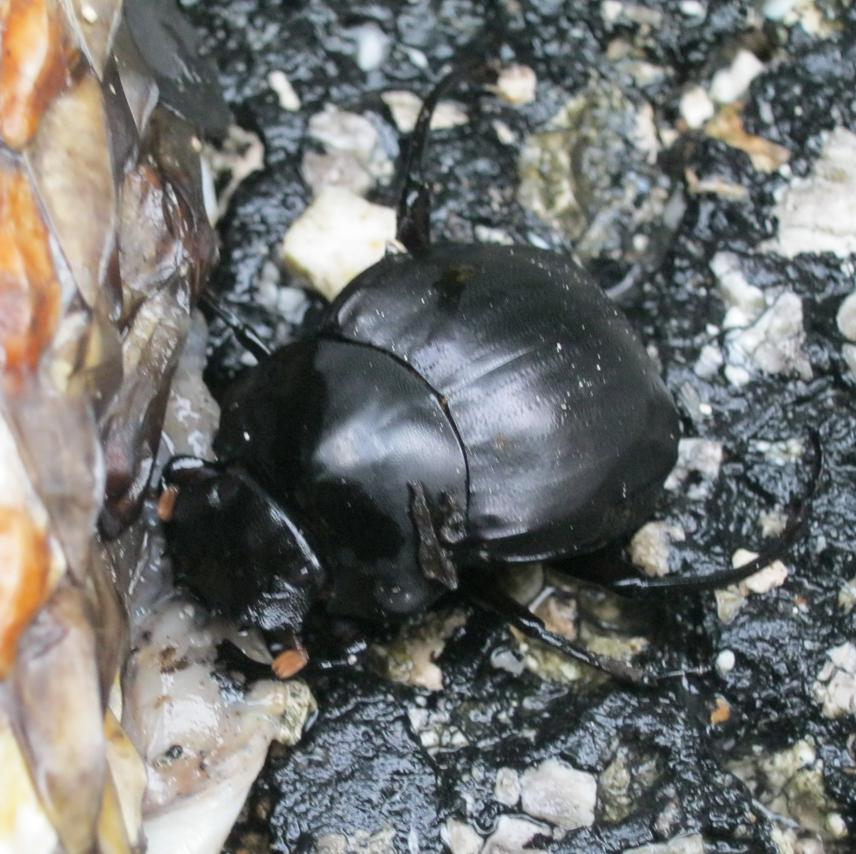Maria Victoria Capello
This project aims at generating information about the ecology of Scarabaeinae dung beetles, analyzing species diversity and distribution patterns in relation to natural forest heterogeneity in the Calakmul Biosphere Reserve. Subsequently, dung beetle diversity response to forest transformation in neighboring communal lands will be examined involving community members.

Human-induced natural landscape transformation is acknowledged to be the main driver for contemporary biodiversity rapid declines, still undisturbed landscapes intrinsic heterogeneity remains poorly understood. Recognizing nature´s non-uniformity when analysing diversity patterns is necessary to evaluate precisely how much managed landscapes have diverged from their original state and disentangle human-driven species declines from natural variation. Likewise, worldwide species decline puts forth the urgent need to account for biodiversity; how much there is and how much is being lost. Reliable biodiversity baseline data and measures within and outside protected areas are crucial for elaborating effective conservation policies. Uncertainty (in the data) does not allow proper comparisons to be made, and well founded comparisons are necessary in order to weight the impact of human modification on natural ecosystems and species populations.
The Calakmul Biosphere Reserve (CBR) is one of the largest BR and contiguous (unstudied) tropical forests in Mexico. Located in the Yucatán Peninsula, it is part of the Mexican portion of the Mesoamerican Biological Corridor (MBC) adjacent to the Guatemalan Petén. Large mammal density at CBR is very high and the region is home to considerable-sized populations of jaguars and tapirs. Recent re-colonization of the Peninsula and development are starting to affect the landscape (configuration). In addition, reports have been made on how hunting and road construction are affecting mammals’ ranging patterns. Highlighting the need for conservation efforts to integrate local people activities when formulating management plans for land and other natural resources.
Dung beetles are amongst the most widely employed ecological indicator group in applied biodiversity research (in tropical forests). Considerable evidence relates them to fundamental ecological processes and suggests tropical forest defaunation impacts Scarabaeinae species negatively. Yet no systematic sampling has taken place in the study area. Data brought about on species habitat specificity is fundamental for monitoring biodiversity and assessing the ecological integrity of ecosystems. Given the assorted nature of the mosaic of vegetation types found in the CBR, a semi-random sampling is proposed, analysing Scarabaeinae beetle diversity patterns in relation to structural and spatial heterogeneity, through a hierarchical nested design. Results will shed light on how natural environmental variability influences species patterns of distribution, (improving our understanding of the natural processes that actually maintain biodiversity in intact ecosystems), and provide a basis for comparison to accurately examine biodiversity response to forest transformation in adjacent communal lands.
Along these lines, the proposal seeks to encourage the development of a consensual approach to study biodiversity and generate comparable results. Consequently, increasing the inferential capacity of applied ecological research for biodiversity conservation in modified landscapes.